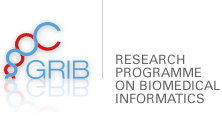
29/05/2023
The eTransafe consortium presents ToxHub a platform that has collected a large toxicological database
Press Release InnovaSpain 25/05/2023
The eTransafe consortium has presented ToxHub which aims to improve the drug safety process. Specifically, "radically improve the predictability, feasibility and reliability of safety evaluation during the drug development process". This platform has centralised access to all these necessary toxicological and ecotoxicological sources and databases. Its benefits are to conduct more effective trials, reduce research time and make medicines safer.
The Spanish representatives of the project are the Hospital del Mar Institute for Medical Research, the Pompeu Fabra University, GMV, MedBioInformatics, Synapse Research Management Partners and the Barcelona Supercomputing Center.
To achieve the main goal of the project , they first had to organise and share, using data governance techniques, all available information from pharmaceutical companies. "It was necessary to generate a sufficient volume of biomedical data so that big data technology and computational methods could draw conclusions from them, information that, without these technologies, could not have been processed," explains Adrián Rodrigo, Smart Health Business Solutions representative of the company.
Also, now, with ToxHub, it is possible to perform more effective trials for the evaluation of the safety of drugs, "replacing part of the animal studies with retrospective analysis technology, based on the evidence accumulated by the pharmaceutical industry".
How ToxHub works
The eTransafe consortium has also developed in silico tools -via computational simulation- for data extraction, visualization and prediction of potential toxicity. The same ToxHub gathers preclinical and clinical databases in a data infrastructure, combined with computer and visualization tools to see how the industry designs drugs and predict adverse reactions.
"So far, chemo-informatics approaches have relied heavily on computational prediction of chemical-biological interaction and subsequent consequences for adverse drug outcomes. However, little mechanistic toxicological information has yet been integrated into computational toxicology strategies," Adrián says.
Finally, the eTransafe project's ambition has been to "extend integration with chemo-informatics, bioinformatics, experimental toxicology and clinical safety of medicines".



